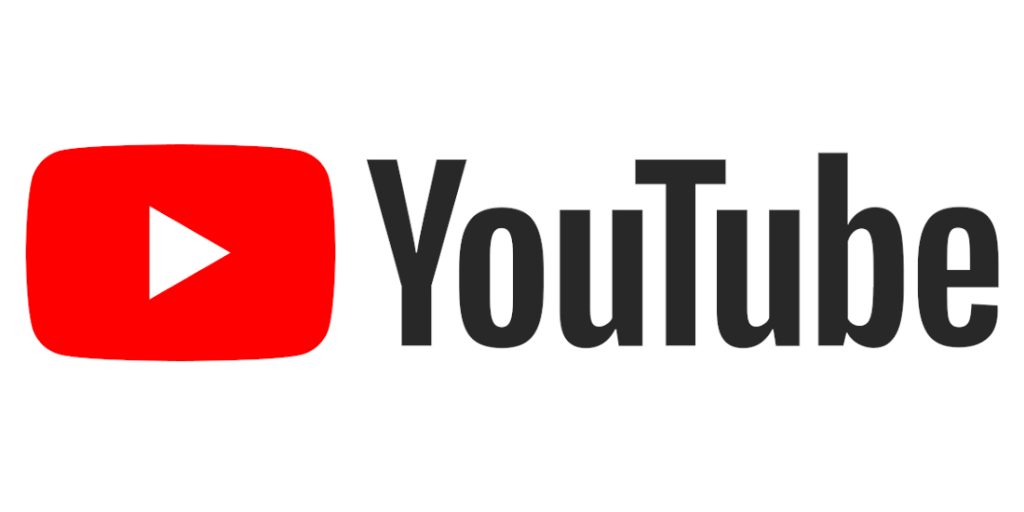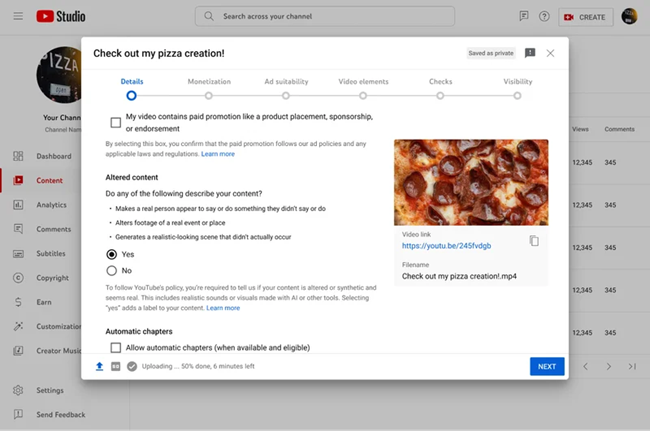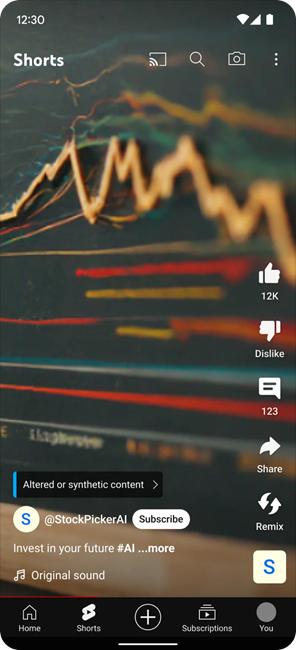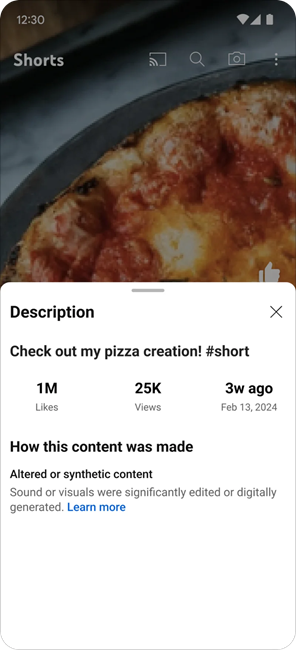
YouTube has introduced a new tool in Creator Studio aimed at ensuring transparency and trust between creators and viewers.
What Requires Disclosure?
This tool requires creators to disclose when they use altered or synthetic media to create realistic content, which viewers could easily mistake for real people, places, or events.
As announced in November, these disclosures will be visible as labels in the expanded description or on the front of the video player.

Examples of content needing disclosure:
1. Using a real person’s likeness but changing it digitally.
2. Changing real events or places in videos.
3. Making realistic scenes for fictional events.
YouTube won’t make creators disclose if they use AI for productivity, like making scripts or captions. They also won’t make creators disclose if the changes are small or the content is clearly unrealistic.
Where Will Labels Appear?
Labels will roll out across all YouTube surfaces and formats. While most videos will have labels in the expanded description, those addressing sensitive topics like health or news will feature more prominent labels directly on the video.
Implementation and Enforcement
YouTube will gradually implement these labels across all platforms. While they aim to give creators time to adjust, they plan to enforce disclosure measures in the future.
In cases where creators consistently fail to disclose information, YouTube may add a label themselves, especially if the content has the potential to confuse or mislead people.
Privacy Process Update
In addition to the disclosure tool, YouTube is working on an updated privacy process.
This process will allow individuals to request the removal of AI-generated or other synthetic content that simulates an identifiable individual, including their face or voice.
YouTube noted that more details on this process will be shared globally soon.
Collaboration for Transparency
YouTube continues to collaborate across the industry to increase transparency around digital content. This includes their involvement as a steering member of the Coalition for Content Provenance and Authenticity (C2PA), demonstrating their commitment to ensuring authenticity and transparency online.
Availability
The YouTube content disclosure tool rollout will begin on the YouTube app, followed by desktop and TV.
Announcing the updates, YouTube posted:
Creators are at the core of YouTube, and they will persist in their vital role of guiding their audience through the realm of generative AI. This journey is dynamic and ongoing, and at YouTube, we are committed to constant enhancement through learning. We believe that this heightened transparency will foster a deeper understanding of how AI nurtures human ingenuity.


